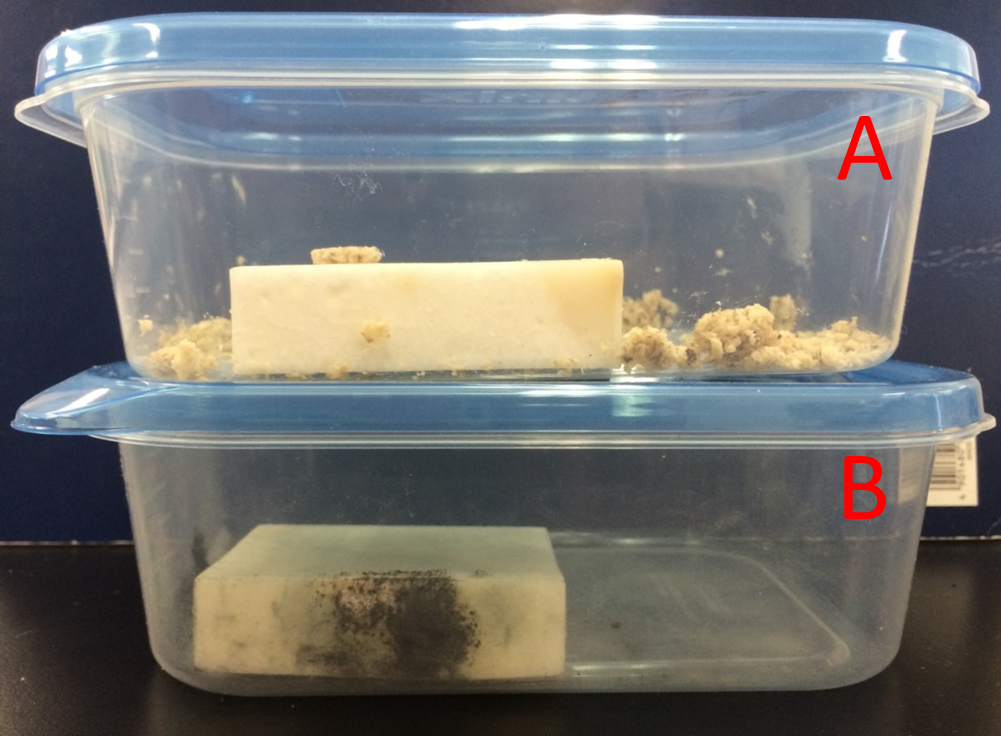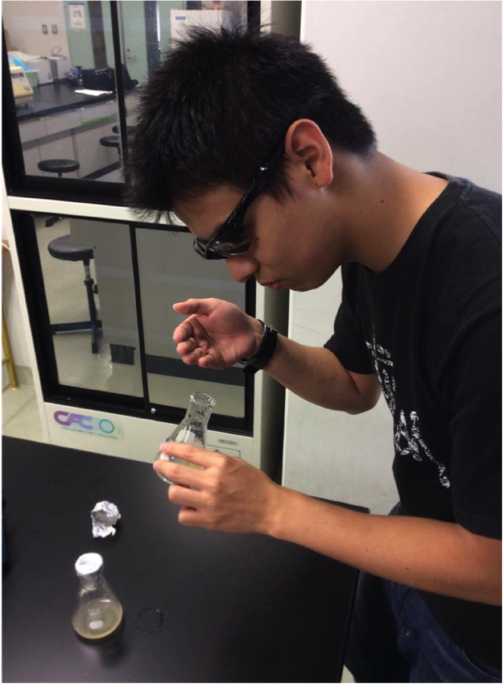Result and Discussion
Confirm antibacterial activity of each volatile substances derived from plant
First, we examined our working hypothesis to “Flavorator” that the volatile gaseous substances from plants’ origin can show either the antibacterial or bacteriostatic activity in a box like “KOZOKO”. The results clearly showed that all the volatile substances of wasabi(Japanese horse radish), rose, garlic and onion had antibacterial properties. In the literatures, wasabi, rose, garlic and onion have antibacterial volatiles, such as allyl isothiocyanete (wasabi), geraniol (rose), allicin (garlic), and lachrymaltory-factor (onion) These antibacterial volatiles are produced after complicated pathways, so for their syntheses, various enzymes are required Then, we searched metabolic pathways in E. coli, in which antibacterial volatiles can be either end products or intermediates. The search hit the geraniol. In E. coli, a precursor of geraniol, geranyl diphosphate (GPP), is synthesized. If we can successfully operate one enzyme to E. coli, it may synthesize geraniol using geranyl diphosphate as a precursor. In this context, we designed our system for establishing the concept of “Flavorator” to build up a brand-new biosynthetic pathways, in which geraniol is produced in the E. coli.
In doing so, we transfer the three types of genes listed below to create the hyper-producer E. coli of geraniol.
We examined our working hypothesis to “Flavorator” that the volatile gaseous substances from plants’ origin can show either the antibacterial or bacteriostatic activity in a box like Kozoko.
Fragrance of Garlic
○Protocl here
Garlic grated produced its fragrances to suppress unwanted microbial growth. Left pork(A) didn't change the color. Right pork(B) changed Pink to Brown. We found from this result that fragrance of plants have antibacteril volatiles.
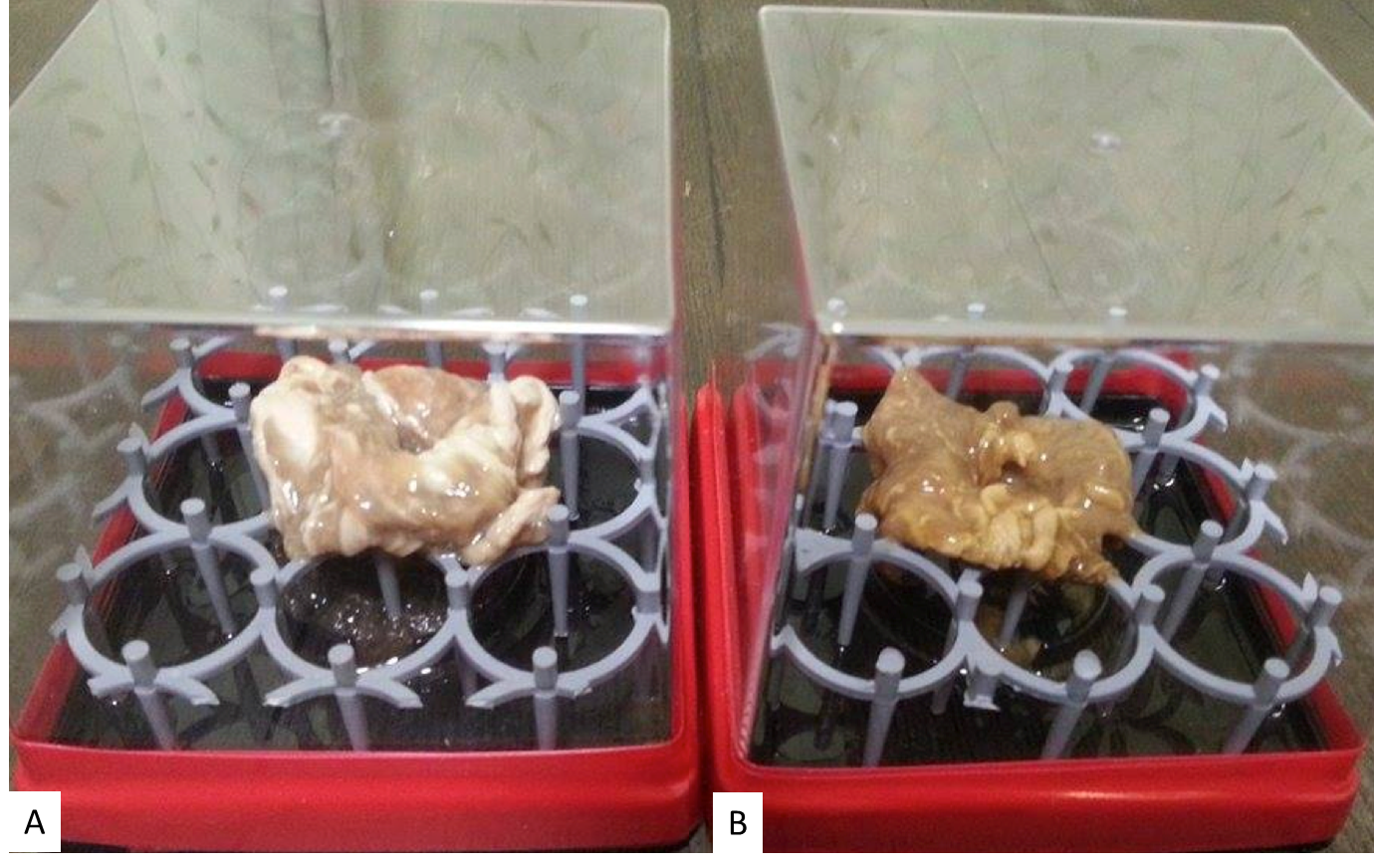
Left pork (A) was spread the garlic grated. Right pork (B) wasn’t spread the garlic grated. We left the two pork in the box at 18℃ for 2 month. Left pork (A) didn’t change the color. Right pork (B) changed Pink to Brown.
Fragrance of wasabi
Protocl here
Wasabi grated produced its fragrances to suppress unwanted microbial growth.
We found from this result that fragrance of plants have antibacteril volatiles.
Fragrance of geraniol
Protocl here
Rose grated produced its fragrances to suppress unwanted microbial growth.
We found from this result that fragrance of plants have antibacteril volatiles.
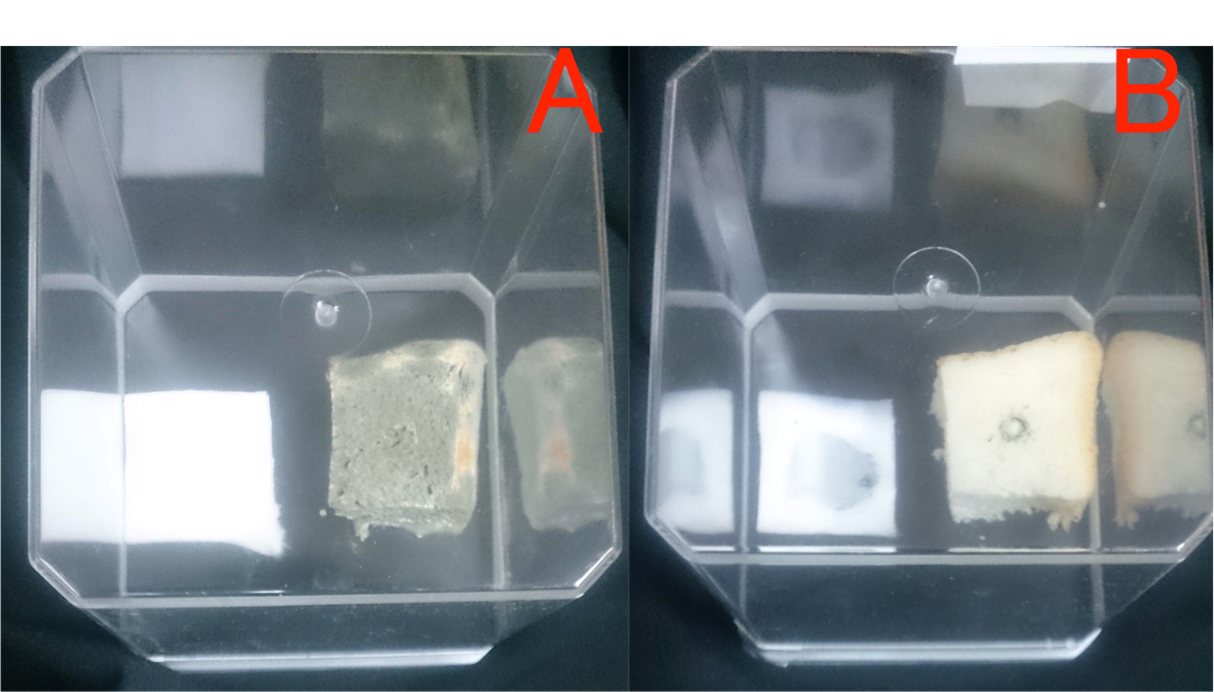
fig1:Storage of food by geraniol. A:ddH2O(300 μl)B:geraniol(stock solution, 300 μl) Incubation: 35 days Temperature: room temperature Chopsticks dipped in suspension of mold was put in the center of the bread. Mold were cultured among the left box(A), and mold weren’t cultured among the right box(B), suggesting that mold can’t be cultured in a state where geraniol is filled. This experiment indicate that geraniol might be the effect of suppressing the growth of bacteria.
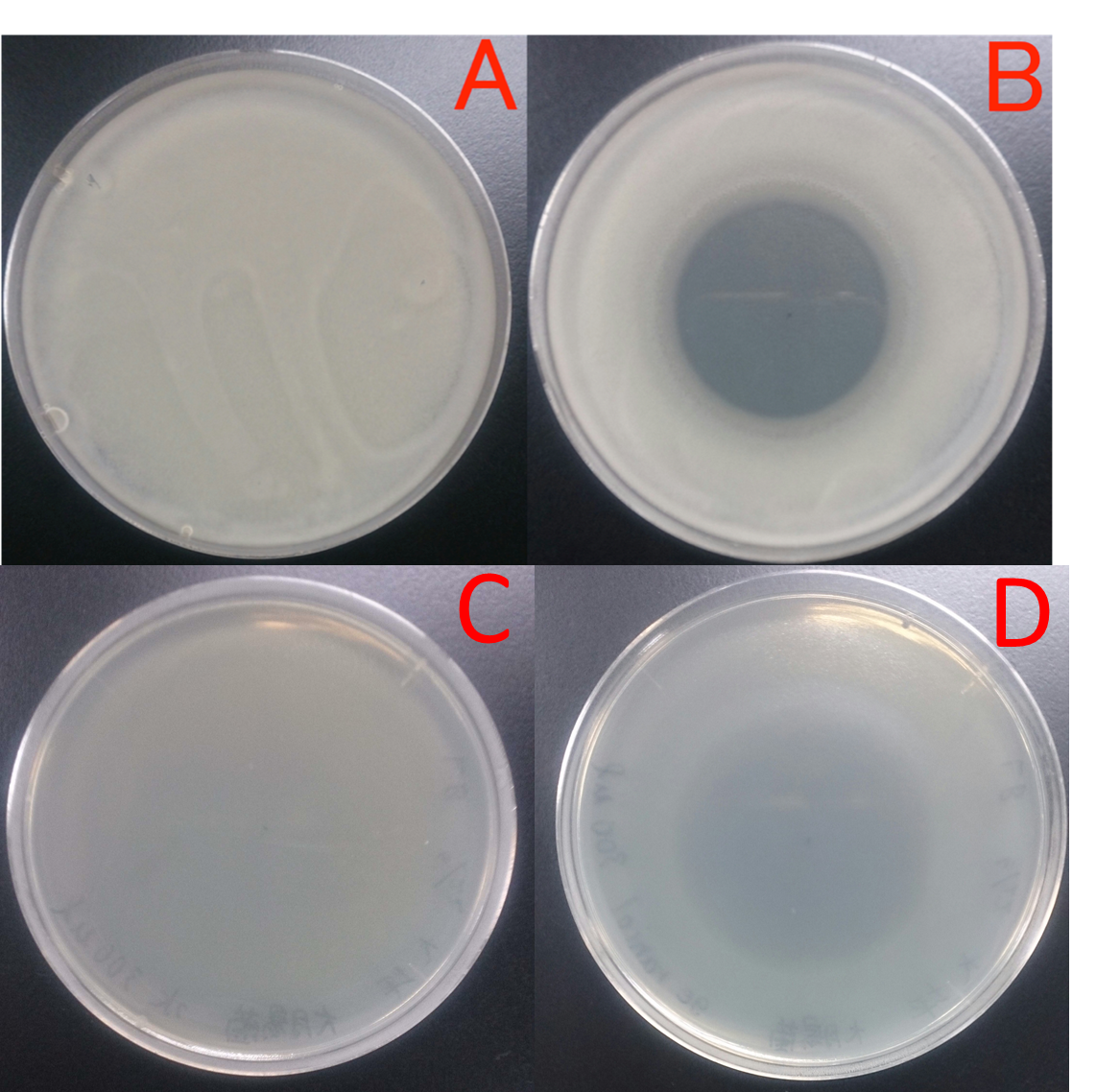
fig2:Antibacterial confirmation of geraniol Comparison of the A and B(Chassis:
Bacillus subtilis var. natto) A:ddH2O(300 μl)B:geraniol(stock solution, 300 μl) Incubation:21 hours Tempareture:37 ℃ Geraniol is released toward the center of the plate. Inhibition circle didn’t exist on the medium(A), and Inhibition circle existed on the medium(B), suggesting that
Bacillus subtilis var. natto can't cultured at high concentration of geraniol. Comparison of the C and D(Chassis:
E. coli) C:ddH2O(300 μl)D:geraniol(stock solution, 300 μl) Incubation:21 hours Tempareture:37 ℃ Geraniol is released toward the center of the plate. Inhibition circle didn’t exist on the medium(C), and Inhibition circle existed on the medium(D), suggesting that
Bacillus subtilis var. natto can't cultured at high concentration of geraniol. Comparison of the B and D(Chassis:
Bacillus subtilis var. natto and
E. coli) Inhibition circle of
Bacillus subtilis var. natto(B) is brighter than the inhibition circle of
E. coli(D), suggesting that
Bacillus subtilis var. natto is lower resistance to geraniol than
E. coli. This experiment indicate that geraniol might be the effect of suppressing the growth of bacteria, and there might be a difference in the resistance of geraniol by bacteria.
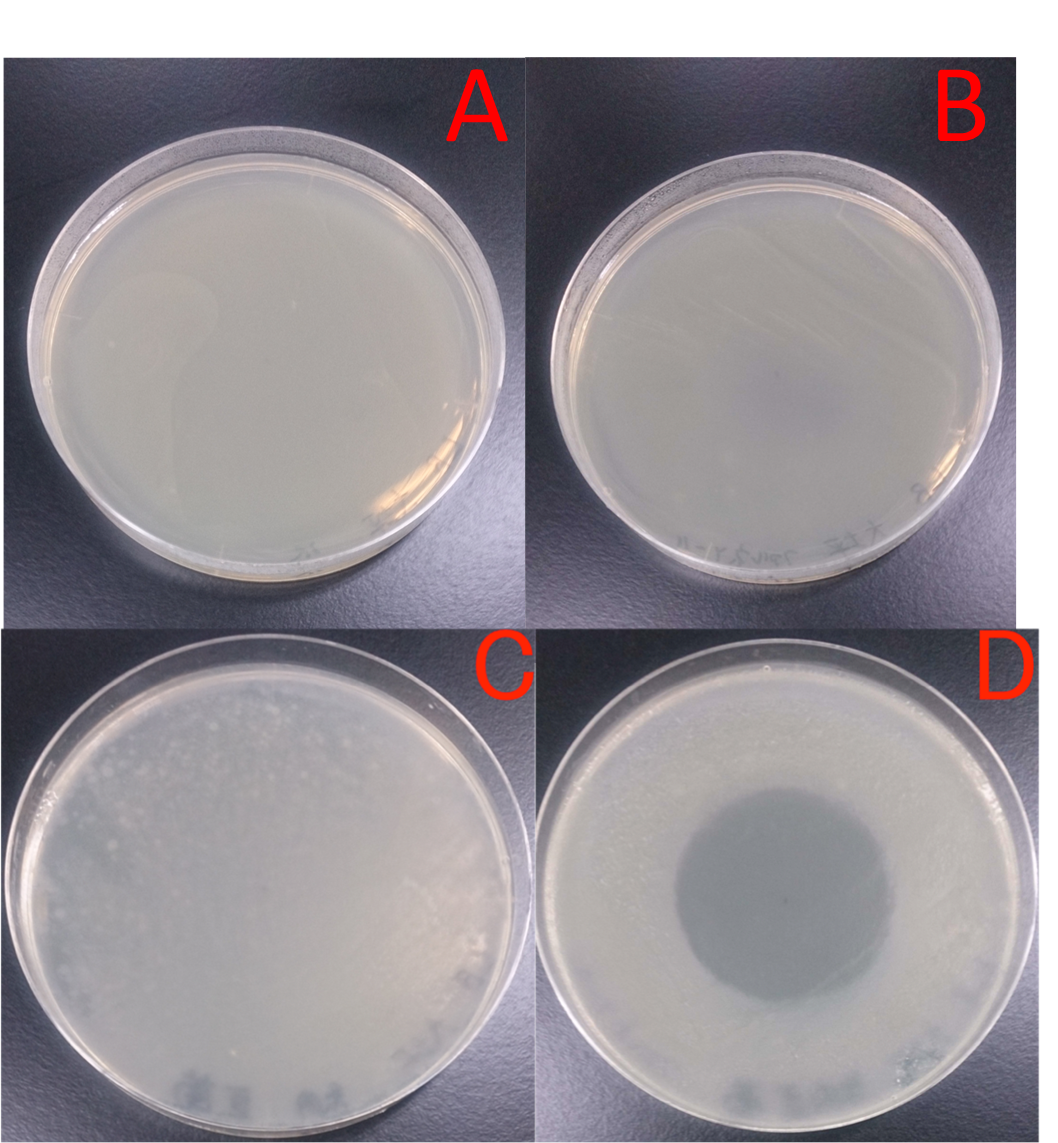
fig3:Antibacterial confirmation of farnesol Comparison of the A and B(Chassis:
E. coli) A:ddH2O(300 μl)B:farnesol(stock solution, 300 μl) Incubation:21 hours Tempareture:37 ℃ Farnesol is released toward the center of the plate. Inhibition circle didn’t exist on the medium(A), and Inhibition circle didn’t exist on the medium(B), suggesting that
E. coli can cultured at high concentration of farnesol. Comparison of the C and D(Chassis:
Bacillus subtilis var. natto) C:ddH2O(300 μl)D:farnesol(stock solution, 300 μl) Incubation:21 hours Tempareture:37 ℃ Farnesol is released toward the center of the plate. Inhibition circle didn’t exist on the medium(C), and Inhibition circle existed on the medium(D), suggesting that
Bacillus subtilis var. natto can't cultured at high concentration of farnesol. Comparison of the B and D(Chassis:
E. coli and
Bacillus subtilis var. natto) Inhibition circle was only present on Medium of
Bacillus subtilis var. natto(D), suggesting that
Bacillus subtilis var. natto is lower resistance to farnesol than
E. coli. This experiment indicate that farnesol might be the effect of suppressing the growth of bacteria, and there might be a difference in the resistance of farnesol by bacteria.
Increase in the amount of terpenoid's precursors
○protocol here
-
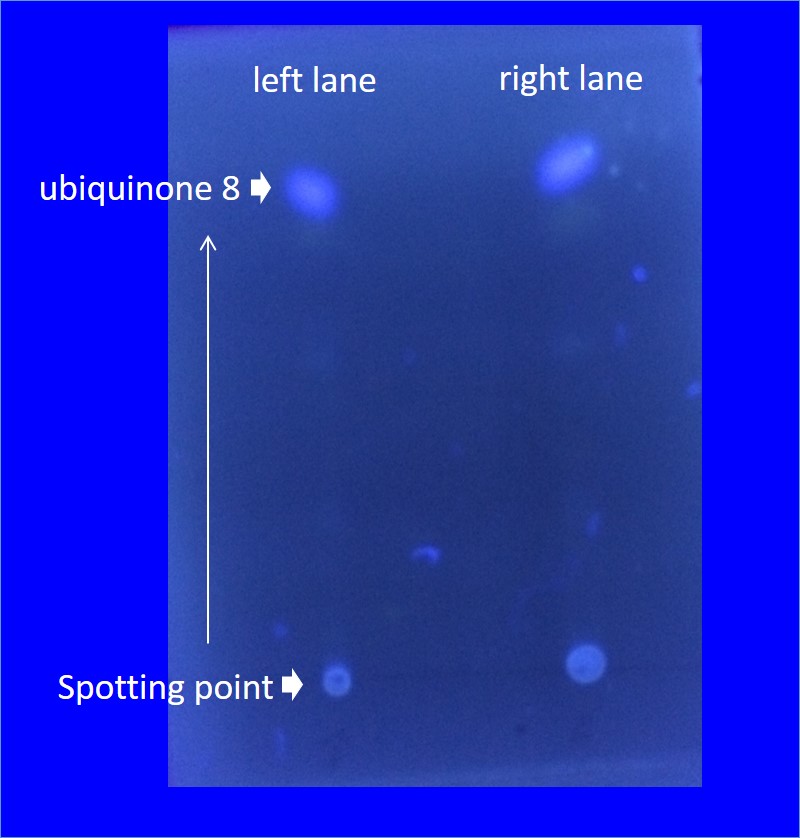
Analysis of ubiquinone-8 synthesized by
E. coli JM109/[http://parts.igem.org/wiki/index.php?title=Part:BBa_K1653025 BBa_K1653025]
by thin-layer chromatography (TLC) Right lane: IPTG Left lane: IPTG minus
-
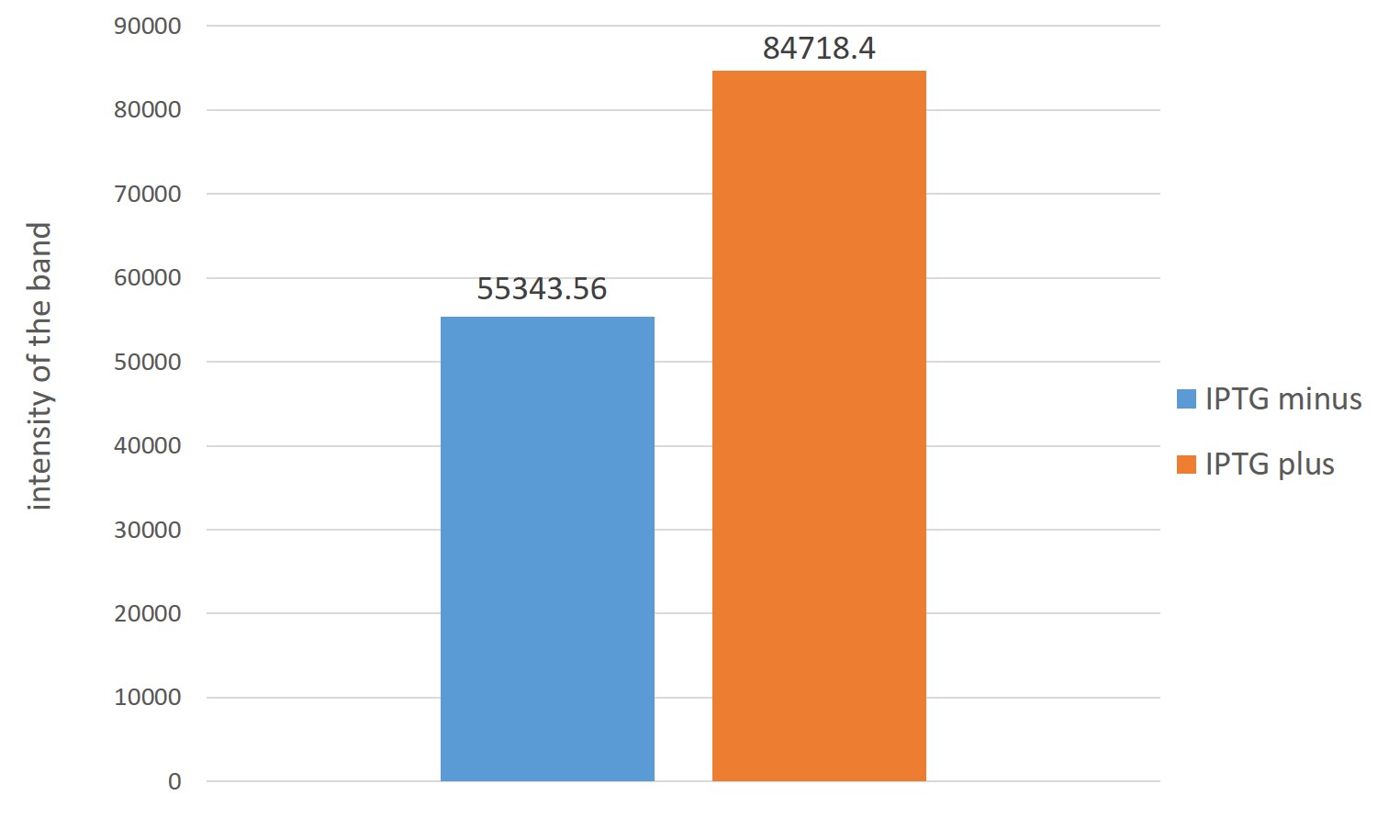
Estimation of ubiquinone-8 content in spot Each intensity of spots indicating the content of ubiquinone-8
Analysis of ubiquinone-8 synthesized by E. coli JM109/[http://parts.igem.org/wiki/index.php?title=Part:BBa_K1653025 BBa_K1653025]
by thin-layer chromatography (TLC)
Produce of Geraniol and Farnesol
Geraniol production
Farnesol production
Farnesol production device ([http://parts.igem.org/wiki/index.php?title=Part:BBa_K1653025 BBa_K1653025])

E. coli strain engineered with MEP pathway enzymes, ispDF, idi, and dxs , in combination with the enzyme gens, ispA, produced farnesol (Fig. 4B), which was detected by the Gas chromatography/Mas (Fig. 4A-G), having the same retention time as the farnesol chemica sample (Fig. 4A), while the counterpart control E. coli did not produce farnesol under the same conditions (Fig. 4C). Neither E. coli engineered with MEP pathway enzymes only nor the one engineered ispA only showed any farnesol by the Gas chromatography/Mass (Figs. 4D and E). Farnesol is generated through hydrolysis of farnesyl diphosphate (FPP) by the endogenous phosphatases. Increase in farnesol should be associated with an increased intracellular FPP level. FPP is, in turn, converted from geranyl diphosphate (GPP), whose precursors are IPP and DMAPP. IPP and DMPP are end products of MEP pathway that exists in E. coli. Conversion to FPP from IPP or DMPP requires ispA (or m-ispA). Following this context, we speculate that E. coli could produce farnesol better than the counterpart control cells under the up-regulated cellular conditions of an increased intracellular MEP pathway enzymes by metabolic engineering in combination with the special enzyme that converts IPP or DMAPP into FPP.
Gas Chromatography/Mass(GC/MS)

Fig4:The FOH standard solution (Ref) was used as a control. The peak corresponding to the FOH standard at 8.5 min is indicated by an arrow. The peak at 8.5 min was applied to GC/MS. The FOH standard solution (Ref) was used as a control.
E. coli JM109([http://parts.igem.org/wiki/index.php?title=Part:BBa_K1653025 BBa_K1653025]) were compared with respect to FOH formation using GC-MS. The fagment patarn is Similar with Ref.
Efficient export of geraniol from E. coli to the media
Export
 [http://parts.igem.org/wiki/index.php?title=Part:BBa_K1653020 BBa_K1653020]
[http://parts.igem.org/wiki/index.php?title=Part:BBa_K1653020 BBa_K1653020]
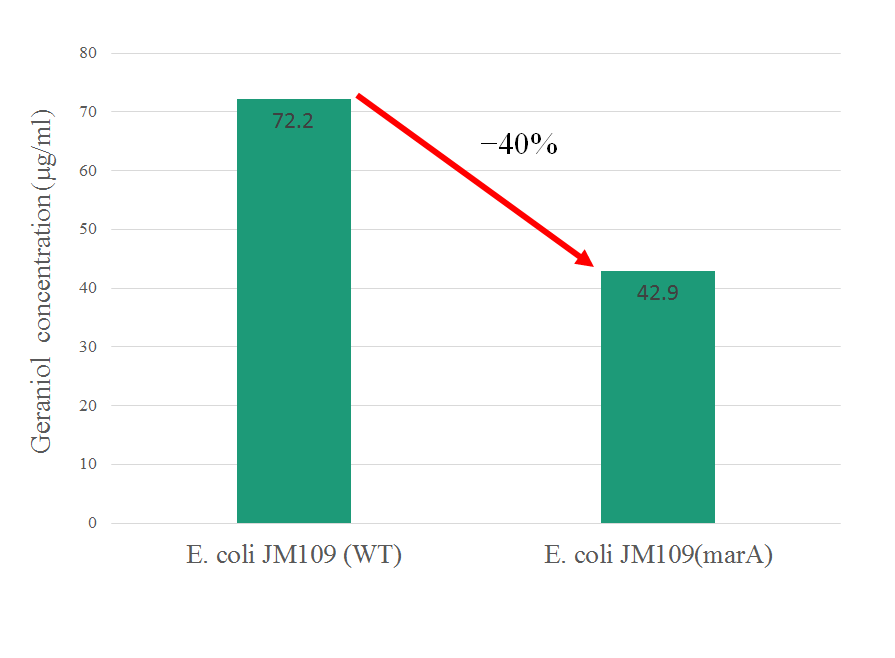
Fig. XXX: Intracellular geraniol concentrations of
E. coli JM109 (WT) and its overexpressing of
marA strain,
E. coli JM109 (
marA).
In this figure, intracellular content of geraniol was less in the strain
E. coli JM109 (
marA) than the strain
E. coli JM109 (WT). The concentrations of intracellular geraniol from
E. coli JM109 (
marA) was 42.9 μg/ml, which was 40% lower than that from of
E. coli JM109 (WT), 72.2 μg/ml. This figure is suggesting that internalized geraniol could be more efficiently exported through AcrAB-TolC efflux pump following the presumed activation of this gene by introducing the activator
marA gene.
Resistance
 [http://parts.igem.org/wiki/index.php?title=Part:BBa_K1653020 BBa_K1653020]
[http://parts.igem.org/wiki/index.php?title=Part:BBa_K1653020 BBa_K1653020]

Fig. X: Colony formation efficiencies of
E. coli JM109 engineered with
marA on geraniol overlaid plates.
E. coli JM109 and
E. coli JM109 (
marA) were spotted on LBGMg agar plates in serial ten-fold dilutions (10⁻¹~10⁻⁵), overlaid with geraniol solutions, and incubated at 30°C for 24 h. This figure shows that
E. coli JM109 (
marA) cells that overexpress the
marA product is more survived on geraniol overlay plates than the counterpart control
E. coli JM109 wild type cells.

Fig. XX: Comparison of colony numbers after addition of geraniol solution. Time interval for treatment was set every 1 hour from 1 hour to 4 hours. A:
E. coli JM109 (WT) + hexane; B:
E. coli JM109 (
marA) + hexane; C:
E. coli JM109 (WT) + geraniol; D:
E. coli JM109 (
marA) + geraniol. As shown in Figs. XX A and B, treatment with hexane of
E. coli JM109 (WT) and of
E. coli JM109 (
marA) showed similar colony numbers during these treatment intervals to those of time zero. This result suggests that hexane at this concentration and duration of time for 4hours did not affect both cell growth. In contrast, treatment with geraniol of
E. coli JM109 (WT) and of
E. coli JM109 (
marA) showed toxicities to both strains (Figs. XX B, C and D). If we watch the colony numbers carefully,
E. coli JM109 (
marA) had more than
E. coli JM109 (WT) during these treatment intervals ((Figs. XX C and D). These results demonstrate that toxicity of the geraniol was less to the strain
E. coli JM109 (
marA) than the strain
E. coli JM109 (WT).




 [http://parts.igem.org/wiki/index.php?title=Part:BBa_K1653020 BBa_K1653020]
[http://parts.igem.org/wiki/index.php?title=Part:BBa_K1653020 BBa_K1653020]

 [http://parts.igem.org/wiki/index.php?title=Part:BBa_K1653020 BBa_K1653020]
[http://parts.igem.org/wiki/index.php?title=Part:BBa_K1653020 BBa_K1653020]




